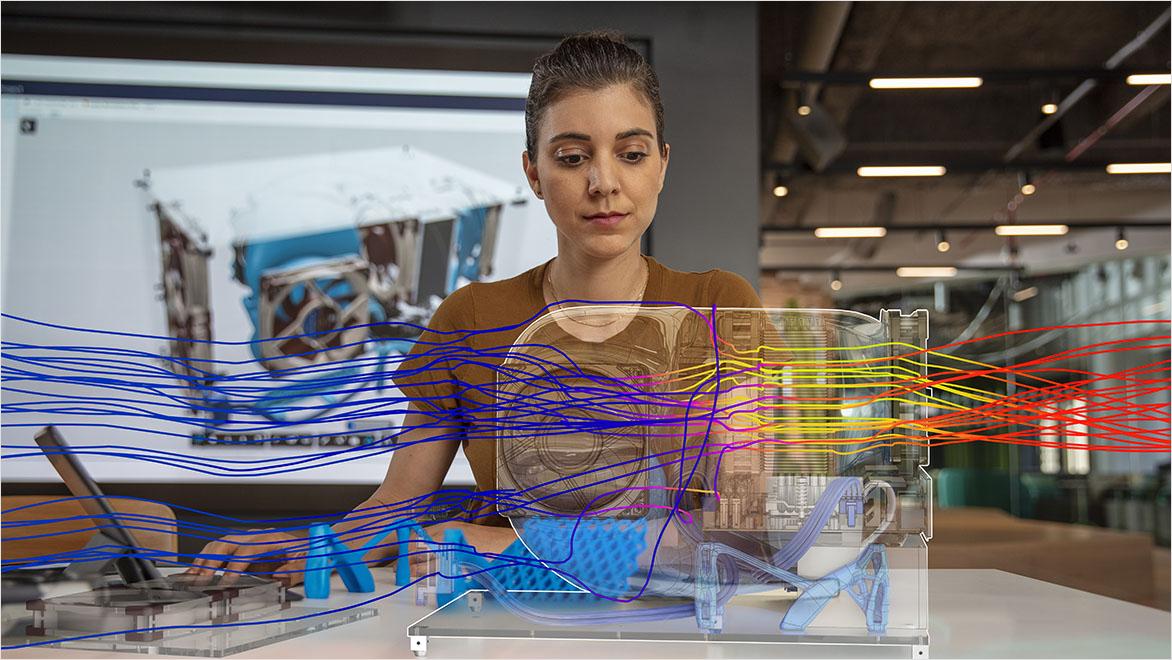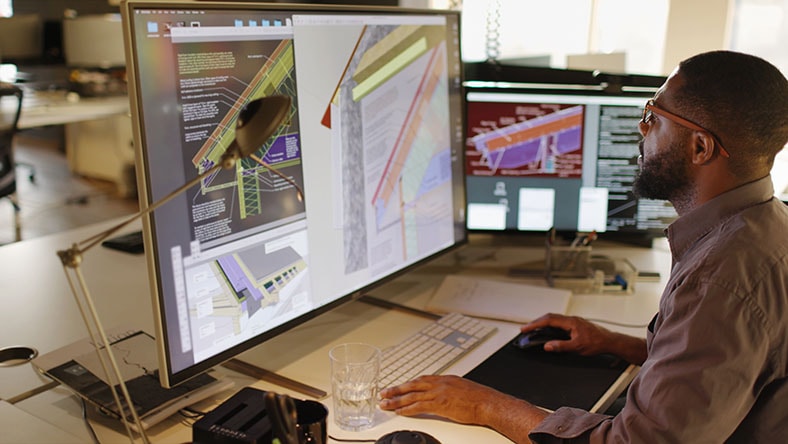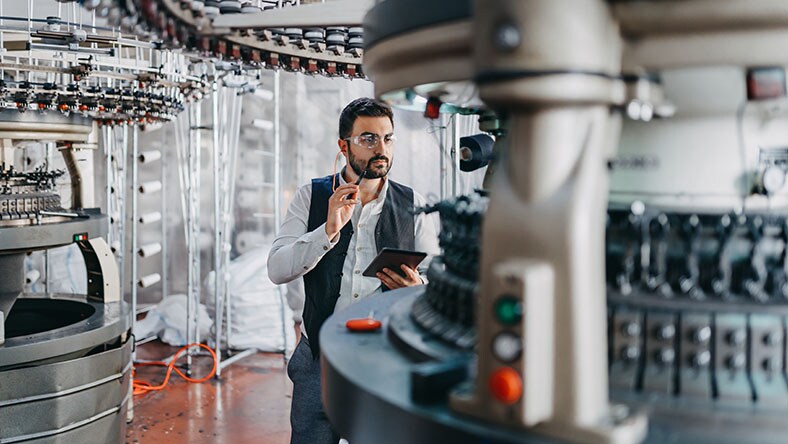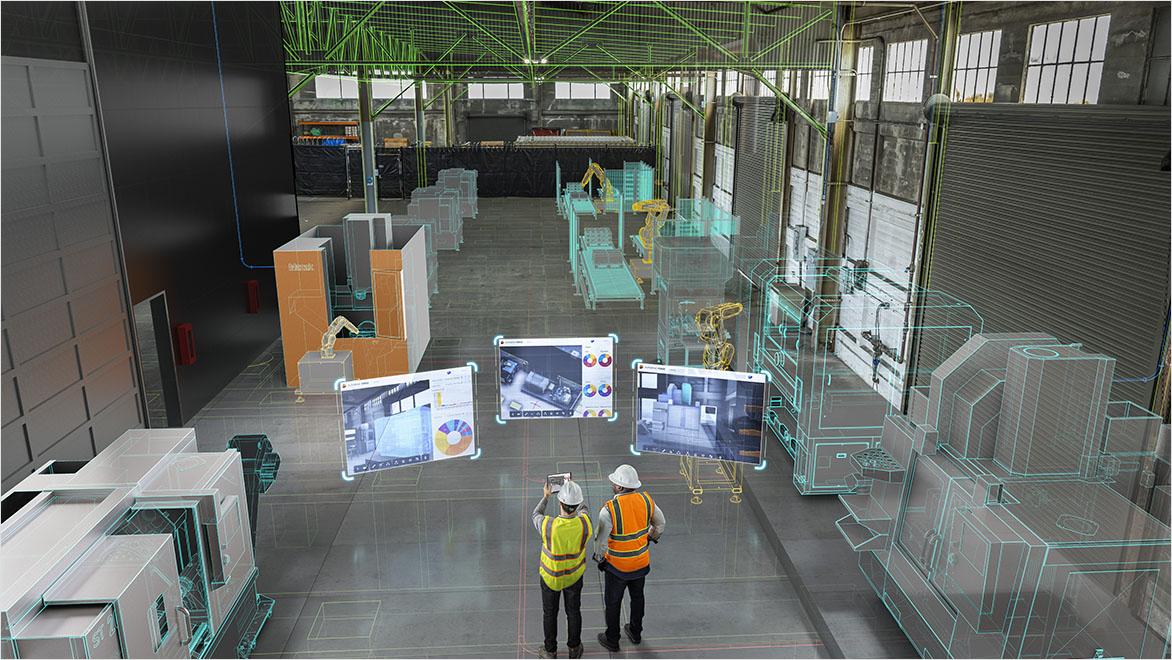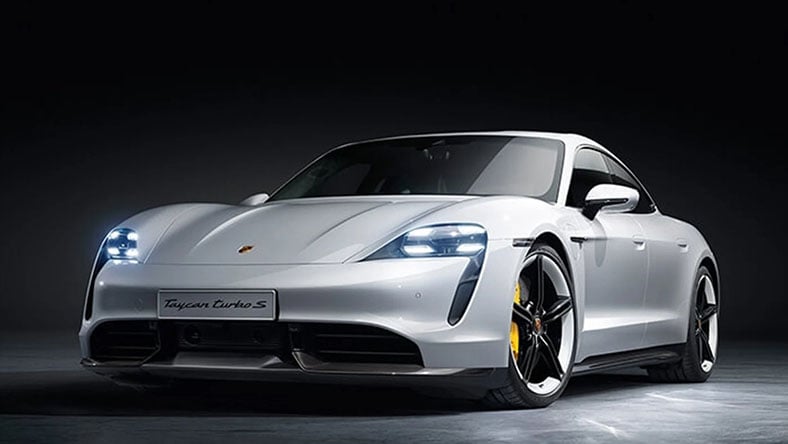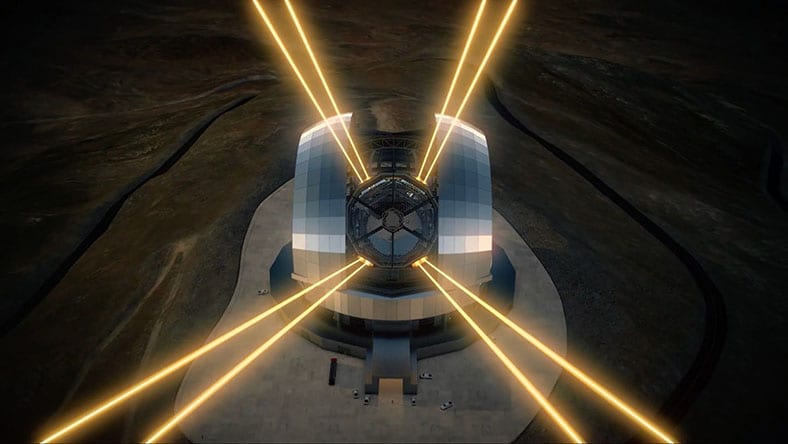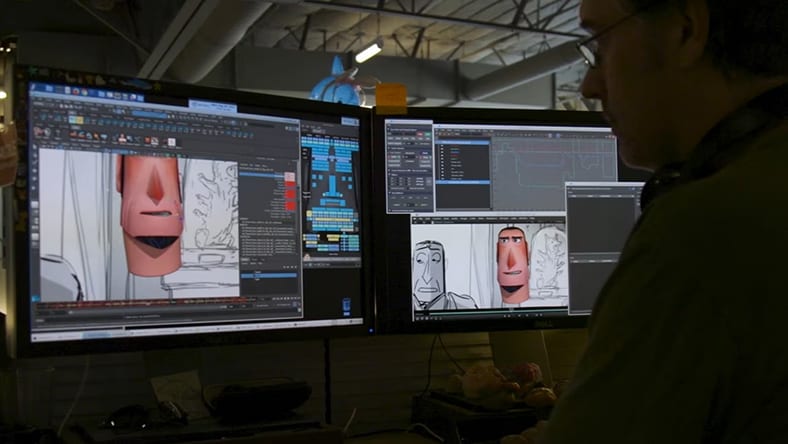& Construction

Integrated BIM tools, including Revit, AutoCAD, and Civil 3D
& Manufacturing

Professional CAD/CAM tools built on Inventor and AutoCAD
Convergence is the merging or integration of different types of data, technologies, processes, skills, or industries to create something new or more efficient. Convergence is the new frontier of Design & Make and represents the next step in a company’s digital transformation.
Convergence removes silos, centralizes data, and advances digital transformation.
In architecture, engineering, construction, and operations (AECO), convergence is breaking down traditional silos by connecting design, construction, and operations through technologies such as building information modeling (BIM) and digital twins. 65% of Autodesk State of Design & Make report (PDF, p.28) AECO respondents say their company is digitally mature, and 44% consider themselves very mature in Design for Manufacturing and Assembly (DfMA). As eco-friendly practices and renewable energy solutions are incorporated into the design and construction processes, smarter, greener buildings can be built.
In product design and manufacturing (PD&M), convergence drives advanced manufacturing technologies with digital tools such as CAD, CAM, and simulation software. Centralized data ensures consistency and precision, allowing manufacturers to streamline workflows, optimize production processes, and create rapid prototypes using methods like 3D printing and generative design. Combining digital twins, automation, and artificial intelligence (AI), companies can simulate and monitor entire production systems, improving efficiency and reducing waste. With these benefits, it’s no surprise 79% of respondents (PDF, p.21) surveyed in the State of Design & Make report say that the future growth of their company depends on using digital tools.
In the media and entertainment (M&E) industry, convergence reshapes how content is created, distributed, and consumed. Centralized data acts as the backbone for the blending of digital media, virtual production techniques, and immersive technologies like augmented reality (AR) and virtual reality (VR) create richer, more interactive experiences for audiences. Convergence allows M&E professionals to work seamlessly across physical and digital environments, using advanced tools to streamline workflows, manage digital assets, and enhance collaboration across global teams. Integrating AI and cloud-based platforms is accelerating the content creation process, so creators have time to focus more on storytelling and artistic exploration while reducing the complexities of production. 76% of respondents surveyed in the Design & Make report (PDF, p. 32) believe AI will enhance the M&E industry and make it more creative. Through the power of shared data, these beliefs are becoming reality.
Convergence reshapes industries, offering a powerful competitive edge to those who recognize and act on its potential. Watch Raji Arasu, CTO at Autodesk, and Charlene Li, author and founder of research firm Altimeter explore how companies can assess their digital maturity, prioritize key investments, and build the culture needed to harness convergence.
Here are some of the key benefits that organizations can gain from integrating technologies, processes, and skills:
By integrating technologies, processes, and skills, convergence eliminates redundancies and streamlines workflows, resulting in faster project completion and optimized production timelines.
Convergence fosters collaboration across disciplines and industries, breaking down silos, creating a shared framework that empowers teams to work together more effectively, locally or globally.
Blending different technologies and skills with shared data encourages creative problem-solving and the development of new products, services, and business models that would not be possible in siloed environments.
Convergence reduces errors, rework, and inefficiencies by using data for better planning and execution, leading to significant cost savings in both production and operational phases.
Convergence allows seamless integration of eco-friendly practices and renewable technologies, helping companies reduce their environmental impact and build more sustainable solutions.
With data at the heart of convergence, teams can make informed decisions in real-time, leading to better outcomes and the ability to respond quickly to changing project needs.
AECO convergence trends focus on integrating advanced technologies to boost efficiency and sustainability. Key trends include industrialized construction techniques, digital twins for real-time monitoring, and extended reality (XR) for enhanced design visualization and collaboration. These technologies collectively drive innovation, streamline workflows, and promote greener, more efficient building practices.
Show moreConvergence trends in product design and manufacturing revolve around integrating digital and advanced technologies to enhance efficiency and sustainability. There is a strong progression toward using digital factories for automation, digital twins for process optimization, and XR for immersive design and training experiences. These innovations streamline workflows, support eco-friendly production, and improve collaboration, transforming the manufacturing landscape.
Show moreIn media and entertainment, convergence trends focus on integrating streaming and traditional media, adopting extended reality (XR) for immersive experiences, and sustainability initiatives like virtual sets to reduce environmental impact. Digital twins are also being used to optimize production workflows and enhance content creation efficiency. These trends are increasingly being enabled by AI and cloud technologies, driving innovation toward more engaging, eco-friendly media experiences.
Show moreConvergence is fueled by integrated technologies that place data at the center, enabling streamlined workflows and fostering collaboration across industries. Cloud platforms create a shared digital workspace, enabling real-time data access and updates for teams anywhere.Common data environments fuel this transformation, acting as a central hub to enable real-time collaboration across all project phases. The integration and analysis of data allows for improved accuracy, reduced errors, and accelerated project timelines.
Building information modeling (BIM) and digital twins use detailed virtual models that support real-time decision-making in architecture, engineering, and manufacturing. AI and machine learning automate data analysis and predictive scheduling, boosting efficiency and reducing manual tasks throughout projects.
Extended reality (XR) technologies like AR and VR bring immersive design reviews, virtual prototyping, and interactive training, integrating with BIM and digital twins to allow real-time adjustments before physical implementation. Advanced manufacturing tools like 3D printing connect directly to digital designs, reducing waste and accelerating prototyping. Sustainable energy solutions, monitored via these platforms, ensure eco-friendly practices align with project goals. Together, these technologies dissolve silos and create a cohesive, efficient environment for managing complex projects sustainably.
PORSCHE AG
Show morePorsche uses AutoCAD, Inventor, and Revit to streamline operations, reduce waste, and boost sustainability.
Show moreImage courtesy of Porsche AG.
Show moreEUROPEAN SOUTHERN OBSERVATORY (ESO)
Show moreEuropean Southern Observatory uses tools like Autodesk Construction Cloud, Fusion Manage, Inventor, and Revit to build an “Extremely Large Telescope.”
Show moreLAIKA
Show moreAn animation studio uses Maya and Inventor to blend elements of stop-motion animation and CGI for an award-winning film.
Show moreImage courtesy of LAIKA.
Show moreLearn how fashion executives are reducing waste and increasing efficiency with industry convergence.
See how architects, engineers, media creators, and product designers are unlocking new possibilities with XR.
Learn how Revo Foods uses 3D printing to create minimally processed seafood alternatives.
Industry convergence is the adopting of two or more processes, either intra- or inter-industry, that enable companies to create new products, services or businesses. This occurs as technological advancements, changing consumer demands, and digital transformation blur traditional industry boundaries. By breaking down industry boundaries, convergence allows organizations to expand their offerings, enter new markets, and remain competitive in a rapidly changing, interconnected world.
Autodesk supports convergence by developing interoperable platforms, cloud-based services, and a common data environment to bridge the gap between designers and makers across industries like architecture, engineering, construction, manufacturing, and media. Tools like Autodesk Construction Cloud and Fusion enable real-time collaboration and centralized data management, connecting professionals across disciplines to improve coordination. Autodesk also integrates AI, machine learning, and generative design into its solutions, so users can automate tasks, optimize designs, and innovate. By offering tools that assess environmental impact, Autodesk promotes sustainable practices and eco-friendly design.
Convergence offers numerous benefits, enhancing efficiency, collaboration, and innovation across industries. It eliminates redundant processes and streamlines workflows, allowing teams to share data and work in real time, which saves time and resources. Breaking down silos fosters cross-disciplinary collaboration for unique solutions and creative problem-solving. Convergence also leads to cost savings by reducing duplication and errors, while integrating sustainable practices aligns companies with environmental goals. With access to up-to-date information, teams can make quick, informed decisions for better adaptability and resilience in a dynamic, interconnected world.
Convergence is transforming industries such as AECO, manufacturing, media and entertainment, health care, and automotive by integrating diverse technologies and processes to improve efficiency and innovation. In AECO, convergence enables real-time collaboration across design and construction, supporting sustainable building practices. Manufacturing combines digital tools with advanced production techniques like 3D printing, speeding up prototyping and customization. Media and entertainment merge digital media and XR technologies, allowing richer, interactive storytelling. Convergence in the automotive industry drives innovations in autonomous and connected vehicles as well as digital factory planning. These integrations help industries meet evolving demands, drive efficiency, and increase sustainability.
To start leveraging convergence, companies can invest in foundational technologies like cloud platforms, digital twins, and AI to support collaboration and data integration. Cross-functional collaboration is essential; forming teams across departments allows knowledge sharing and innovation to flourish. A central data platform enables real-time access to shared information, improving efficiency and decision-making. Additionally, fostering a culture of innovation and aligning with sustainable practices helps companies adapt to changing demands while minimizing environmental impact. Together, these steps enable companies to capitalize on convergence, driving greater efficiency, innovation, and sustainability.

